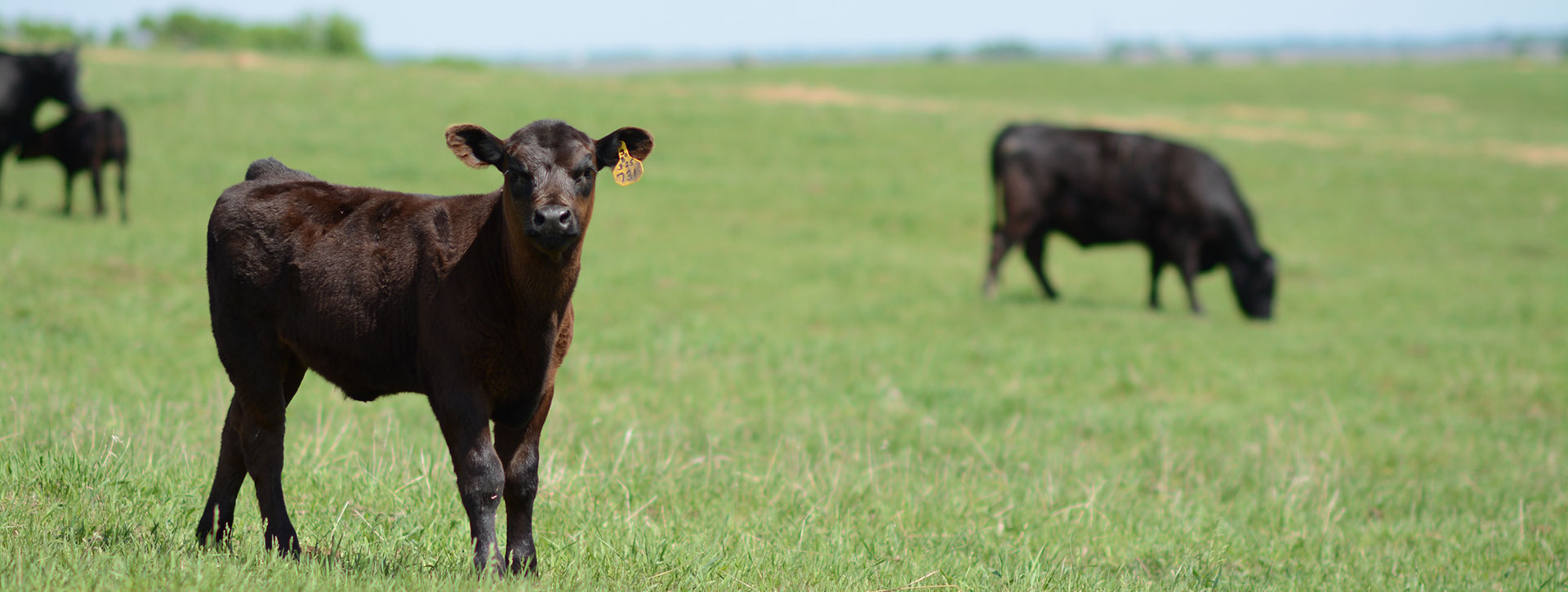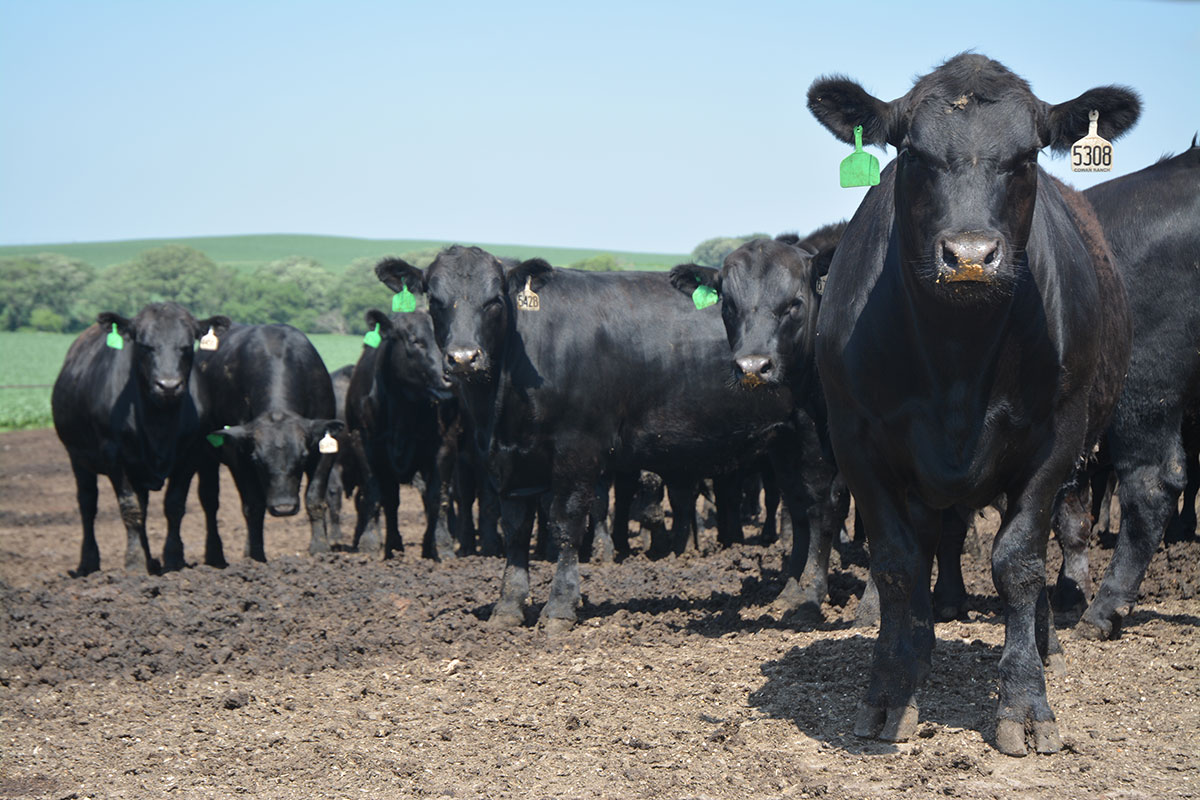
Avoiding the storm
Proactive animal health means a genetic approach.
By: Miranda Reiman
The beef community is getting ready to rip off the Band-Aid.
Antibiotics are effective tools in managing animal health, but they’ve also been a patch, serving until the advent of genetic tools to solve challenges in the long term.
“We’ve had increasing scrutiny around the use of antibiotics, so we need to be ready,” said Brad Hine, research scientist for Australia’s Commonwealth Scientific and Industrial Research Organisation (CSIRO). “Our ability to use antibiotics in our food-producing animals is, in the next few years, going to be rapidly reduced. A really good strategy is to try to breed animals that have improved disease resistance.”
In others words, create cattle that don’t get sick. What may sound like a far-off wish is quickly becoming reality.
At the 2019 Angus Convention in Reno, Nevada, last fall, Hine shared insight into current work his team is doing with the Australian Angus Association. He also talked of upcoming collaboration with Angus Genetics Inc. (AGI).
“As we continue to refine genetic selection, we realize that genetics contribute to animal health in ways we probably don’t fully understand today,” said Mark McCully, CEO of the American Angus Association. “As we start identifying genetic lines of cattle that are less likely to get sick, that has ramifications across the entire industry.”
It matters at every point in the production chain and affects economics, animal welfare and consumer perception.
“It’s easy to make the assumption that the most productive animal is the animal with the best immune system,” Hine said. “Obviously, the healthiest animal grew the fastest.”
But that’s just not true, he said, and in some instances, disease resistance is negatively correlated with production. For example, high-milking Holstein cows are often more at risk for mastitis, he noted.
“The research tells us, if we select for productivity alone, we increase susceptibility to disease,” Hine said. “It’s really important for producers to rethink that.”
Australians have used a strategy developed for the Canadian dairy industry and applied it to Angus cattle.
This broad-based approach is a new twist compared to historical health work, where cattle have been bred for brucellosis resistance while sheep were bred to ward off internal parasites.
“We’ve been very cautious not to tailor this to any specific disease, because we might know one disease, but there’s another one right around the corner,” Hine said.
Different types of pathogens are dealt with in different ways: there’s a cellular response for viruses that live inside the cells and antibodies that fight those outside the cells.
“There are two different arms in the immune system,” he said. “And the risk you run if you select animals that are very good at one arm of the immune system is that sometimes those animals are not as good at handling pathogens that require the opposite arm.”
They test for both.
Hine’s team vaccinated cattle just before weaning them into the yard, and then took blood tests to measure their response at the most stressful point.
“It’s about breeding animals with a really strong immune system so they can handle whatever challenges they face,” he said. “It is not necessarily the animals that can respond when they are happy and healthy in the paddy that we are trying to identify. It is those animals that can respond to a disease challenge when they are under some stress, and are able to cope with that situation and return to being productive.”

The early work shows the variability is “enormous,” Hine said, and the heritability appears to be moderate. Correlations to other traits were weak but followed as expected: temperament was favorable, production traits like growth were negative.
He said that’s good news, because it means health can become a priority in selection without compromising other goals.
Following indexed animals through the feedlot was a chance to see if the research worked in a real-world scenario.
For every animal that scored high for immunity, there was a $3.50 animal-health cost. Those in the low group accrued $103, Hine said, noting those are conservative estimates that don’t account for labor.
“If we can identify low-immune-competent animals and get them out of the system, there is a huge economic benefit for us as an industry,” he said.
The poorer immunity group accounted for only 11% of the total population, but represented 35% of the health line items.
“As tools are developed, I think the adoption rate will be pretty significant in terms of both pace and scale,” McCully said. “A slight change in the improvement of animal health has huge economic ramification across the industry.”
The technology is “in its infancy,” he said, but the long-term goal would be the creation of genetic tools, both for Angus breeders and their commercial customers, such as genomic tests for replacement heifers or to prescreen cattle bound for the feedyard.
“I could definitely see this as a way of being better able to characterize risk,” McCully said. “You could modify your management to the risk level.”
Today, cattle often receive metaphalix—or whole herd treatment–upon processing into the feedyard, but studies show for every 100 that get preventative antibiotics, only 20 actually needed them, said John Richeson, West Texas A&M animal scientist. He spoke about innovations in health during the 2019 Feeding Quality Forum.
So, how do cattlemen identify that bottom fifth?
Researchers are developing everything from rapid blood tests to behavior-monitoring instruments, but they still need fine-tuning.
“We need it to be, ideally, at the speed of commerce so we don’t slow down processing,” Richeson said. The challenge is, how can we target accurately, quickly, and those sorts of things—there could be a huge cost savings to the producer.”
Most of the work is focused on cattle chuteside at the feedyard.
With a genetic test for improved immunity in commercial cattle, that information could be communicated with the yard upon arrival, McCully said. Feedyard protocols could differ based on this information, and eventually, market signals should follow.
“If I’m a feeder, I’m still going to want those cattle vaccinated—it doesn’t change anything about good calf management we do today, McCully said. “But if I can look at a set of cattle that has all of that, plus the genetics that give them the likelihood of staying healthier, that becomes an economic signal back to the producer to make more of those cattle.”
Programs like AngusLinkSM could potentially convey information through the chain.
“I really do see immune competence as just one part of the puzzle when we start to think about the resilience of the animal,” Hine said.
Cattlemen still need a focus on management and environments that control pathogens, giving cattle less exposure in the first place.
“We can breed the animals that are the most disease-resistant, but if we put them in a really bad, high-disease environment, then they will eventually succumb,” Hine said.
Even with improved tools, cattle will still get sick, although hopefully less often. That allows for less antibiotics in the system.
“We need to be proactive rather than reactive. We need to be thinking about strategies now that put us in a good place in the future. Because certainly our ability to treat disease is going to be reduced as regulations come through,” Hiene said. “The perfect storm is brewing. So as an industry, how can we avoid that storm?”
Originally ran in the Angus Journal.
You May Also Like…
Raised with Respect™ Cattle Care Campaign Launched This Fall
Raised with Respect™ was developed as part of a strategic cattle care partnership between Sysco and CAB. The collaboration focuses on supporting farmers and ranchers, equipping them with continuing education to stay current on best management practices and helping to increase consumer confidence in beef production.
Nebraska Ranch Receives Certified Angus Beef Commercial Award
Troy Anderson, managing a Nebraska ranch, focuses on breeding thriving maternal cows that will grade premium Choice and Prime, while respecting livestock, people and land. Anderson Cattle receives the 2023 CAB Commitment to Excellence Award. Their journey includes improving genetics, feeding home-raised and purchased calves and using data for better breeding decisions, all with a bottom-line approach.
Everything They Have
Progress is a necessity on the Guide Rock, Nebraska, ranch where Troy Anderson manages a commercial Angus herd, small grower yard, his 10-year-old son, and a testing environment. Troy’s approach includes respect for his livestock, people and land. For that, Anderson Cattle was honored with the CAB 2023 Commercial Commitment to Excellence Award.




